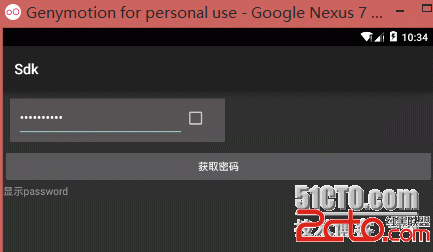編輯:關於android開發
Looper對象,顧名思義,直譯過來就是循環的意思,從MessageQueue中不斷取出message。
Class used to run a message loop for a thread. Threads by default do not have a message loop associated with them; to create one, call prepare() in the thread that is to run the loop, and then loop() to have it process messages until the loop is stopped.
1.Looper的成員變量:
static final ThreadLocal<Looper> sThreadLocal = new ThreadLocal<Looper>(); private static Looper sMainLooper; // guarded by Looper.class final MessageQueue mQueue; //一個MQ final Thread mThread; //一個thread
Looper的代碼是非常簡單的。在官方文檔的注釋中,它推薦我們這樣來使用它:
class LooperThread extends Thread {
public Handler mHandler;
public void run() {
Looper.prepare();
mHandler = new Handler() {
public void handleMessage(Message msg) {
// process incoming messages here
}
};
Looper.loop();
}
}
先看看prepare方法。
public static void prepare() {
prepare(true);
}
private static void prepare(boolean quitAllowed) {
if (sThreadLocal.get() != null) {//每個線程只能有一個looper
throw new RuntimeException("Only one Looper may be created per thread");
}
//設置本線程的looper。
sThreadLocal.set(new Looper(quitAllowed));
}
注意prepare(boolean)方法中,有一個sThreadLocal變量(ThreadLocal為每個使用該變量的線程提供獨立的變量副本,所以每一個線程都可以獨立地改變自己的副本),這個變量有點像一個哈希表,它的key是當前的線程,也就是說,它可以存儲一些數據/引用,這些數據/引用是與當前線程是一一對應的,在這裡的作用是,它判斷一下當前線程是否有Looper這個對象,如果有,那麼就報錯了,"Only one Looper may be created per thread",一個線程只允許創建一個Looper,如果沒有,就new一個。然後它調用了Looper的構造方法。
在上邊調用了構造方法:Looper(quitAllowed),初始化了messageQueue並綁定當前線程。
private Looper(boolean quitAllowed) {
mQueue = new MessageQueue(quitAllowed);
mThread = Thread.currentThread();
}
此時的初始化動作已經結束了,接下來看Looper.loop():
public static void loop() {
final Looper me = myLooper();//返回當前的looper
if (me == null) {
throw new RuntimeException("No Looper; Looper.prepare() wasn't called on this thread.");
}
final MessageQueue queue = me.mQueue;//取得messageQueue
for (;;) {
Message msg = queue.next(); // might block
if (msg == null) {
// No message indicates that the message queue is quitting.
return;
}
。。。。
msg.target.dispatchMessage(msg);
。。。
msg.recycleUnchecked();
}
}
loop()方法,省去了一些不關心的部分。剩下的部分非常的清楚了,首先調用了靜態方法myLooper()獲取當前Looper對象。沒有looper則拋出異常。
public static @Nullable Looper myLooper() {
return sThreadLocal.get();
}
1. myLooper()同樣是靜態方法,它是直接從這個ThreadLocal中去獲取Looper對象,拿到當前線程的Looper後;
2. MessageQueue queue = me.mQueue;拿到與這個Looper對應的MQ,就開始無限循環,不斷的從消息隊列中取出Message,當獲取到一個消息後,它調用了Message.target.dispatchMessage()方法來對消息進行處理。dispatchMessage這個方法在Handler中,就是處理message。
3.msg.recycleUnchecked(),當這個msg處理完了,就沒有用啦,把它回收到全局池中,注意不是銷毀。
Looper的代碼看完了,我們得到了幾個信息:
Looper調用靜態方法prepare()來進行初始化,一個線程只能創建一個與之對應的Looper,Looper初始化的時候會創建一個MQ,並和當前線程綁定,因此,有了這樣的對應關系,一個線程對應一個Looper,一個Looper對應一個MQ。
Looper調用靜態方法loop()開始無限循環的取消息,messageQueue調用next()方法來獲取消息(這也是個無限循環)。
MessageQueue源碼解析:http://www.cnblogs.com/jycboy/p/5786682.html
Message源碼解析:http://www.cnblogs.com/jycboy/p/5786551.html
 自定義Android組件之組合方式創建密碼框組件
自定義Android組件之組合方式創建密碼框組件
自定義Android組件之組合方式創建密碼框組件 Android中所有控件(也稱組件)都繼承自adnroid.view.View類,android.view.View
 [Android]OkHttp的簡單封裝-輔助框架
[Android]OkHttp的簡單封裝-輔助框架
[Android]OkHttp的簡單封裝-輔助框架 序言 OkHttp 的強大算是毋庸置疑了;OkHttp 基本在網絡層能完成任何事情,適用任何情況;正因為如此 OkH
 Android之QQ新用戶注冊界面1,android新用戶注冊
Android之QQ新用戶注冊界面1,android新用戶注冊
Android之QQ新用戶注冊界面1,android新用戶注冊還沒到睡覺時間所以再加了一個界面... 問題: 1、下拉列表(因為還沒看到這裡...) 2、標題欄顯示問題
 詳解Android shape的使用方法
詳解Android shape的使用方法
Android開發者在編程過程中經常要涉及到美工方面的工作,而美工對開發者而言